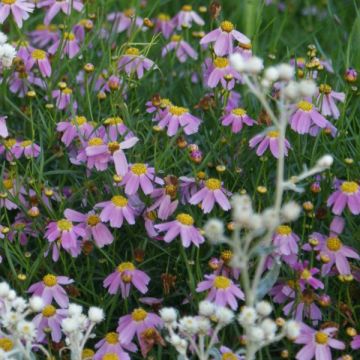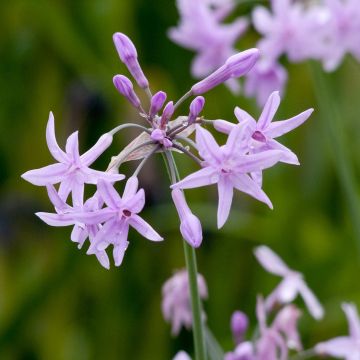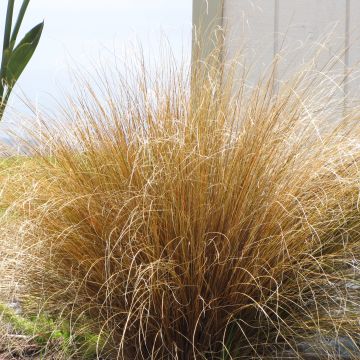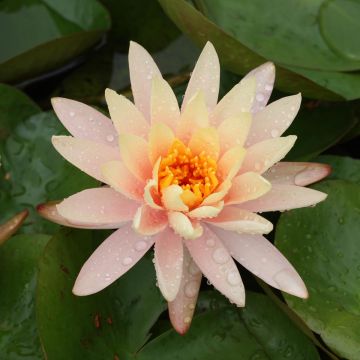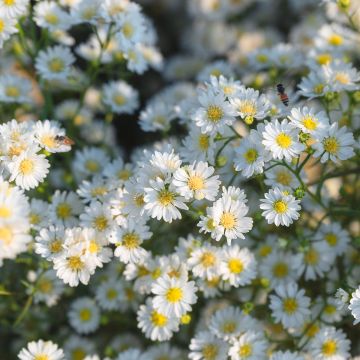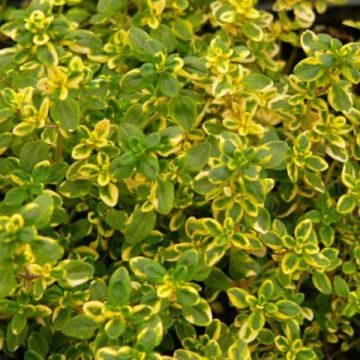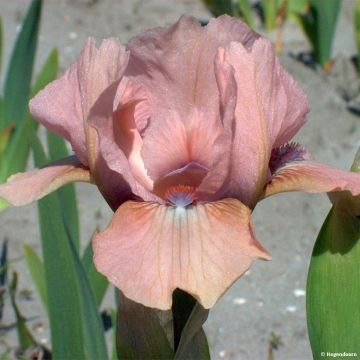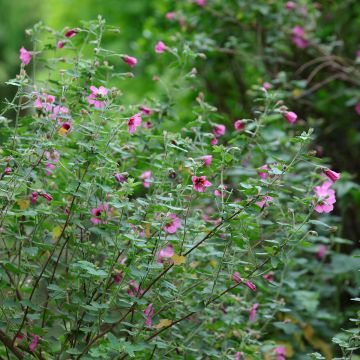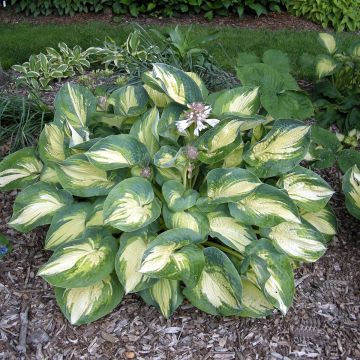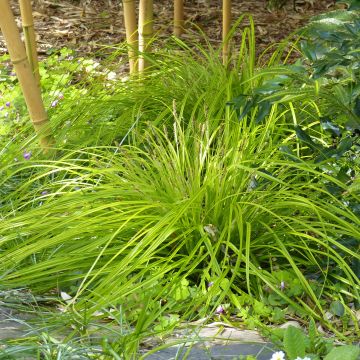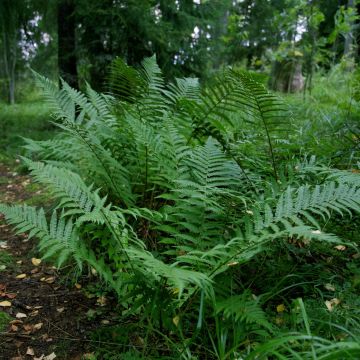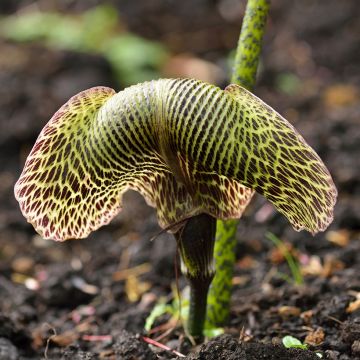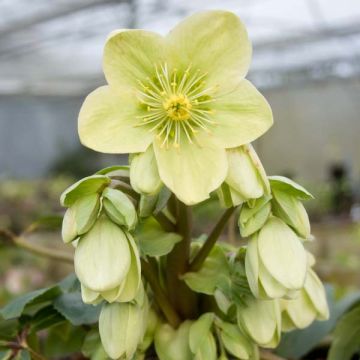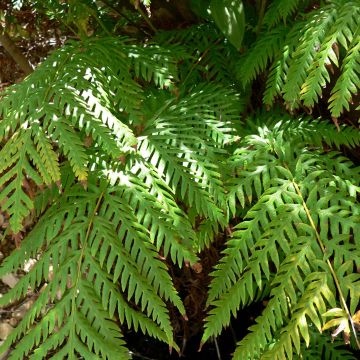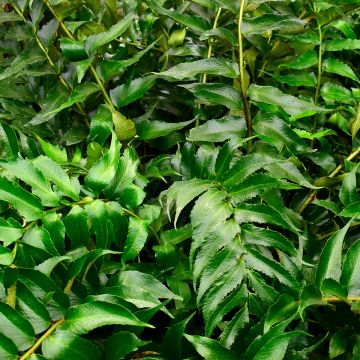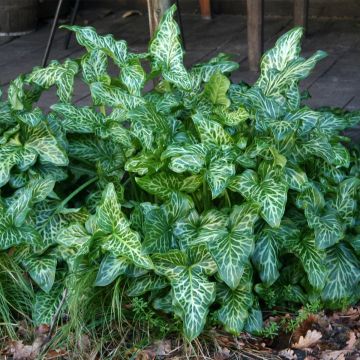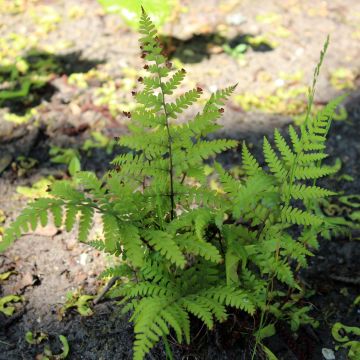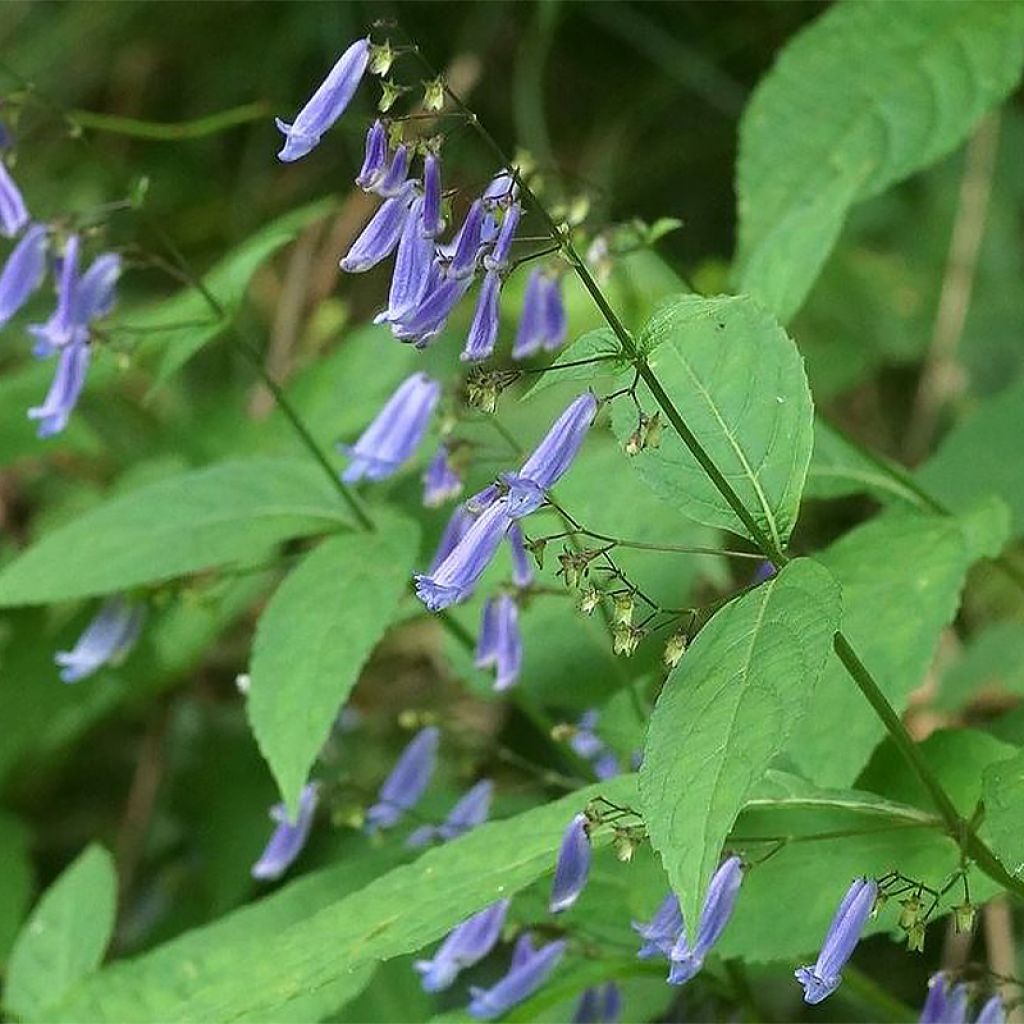

Isodon effusus - Rabdosia effusa
Isodon effusus
Isodon effusus
This item cannot be shipped to the selected country
Delivery charge from €5.90
More information
Schedule delivery date,
and select date in basket
This plant carries a 12 months recovery warranty
More information
We guarantee the quality of our plants for a full growing cycle, and will replace at our expense any plant that fails to recover under normal climatic and planting conditions.
From €5.90 for pickup delivery and €6.90 for home delivery
Express home delivery from €8.90.
Does this plant fit my garden?
Set up your Plantfit profile →
Description
Isodon effusus, or Plectranthus effusus, is part of a group of perennials from Asia that thrive in partial shade and are appreciated for their delicate late flowering. This effusa species, quite rare in cultivation, is a favourite among connoisseurs. It is a delicate plant with a beautiful fountain-like habit, which produces light panicles adorned with tiny bright blue-violet flowers in October. Resistant to cold, this rather accommodating plant prefers slightly sheltered exposures as well as humus-rich soils that remain moist even in summer, where it will fully thrive.
Isodon effusus is a deciduous perennial belonging to the Lamiaceae family, just like salvias. It is native to mountainous areas of Japan, where it is found on forest edges. Resembling a plectranthus, it forms a tuft with a flexible, spreading habit, composed of outwardly arching leafy stems. Its growth is quite slow. When mature, it will reach approximately 70cm (28in) in height and 50cm (20in) in width at the base. Emerging from the ground in spring, its sturdy stems bear opposite, narrowly triangular and elongated leaves with a long pointed tip, toothed edges, and a fairly light green colour. The small tubular flowers appear in October and continue to bloom on the plant as long as it doesn't freeze. They are carried in sparse panicles. The stems die back each year in winter and new growth starts rather late, from April onwards.
It is perfectly hardy and able to withstand temperatures of around -16°C (3.2°F). It is undemanding in terms of soil composition. Isodon effusus thrives in partially shaded positions, protected from the sun during the hottest hours of the day. These conditions can be met on the edge of a grove, in front of deep-rooted deciduous trees or shrubs that won't use up all the available nutrients at the soil surface but will protect the flowering from cold winds. Isodon also enjoys being near a north or east-facing wall, in the company of hydrangeas, Japanese anemones, Fuchsia magellanica 'Alba', corydalis, strobilanthes, aconites, and foxgloves. Bulbs of Naples cyclamen can be planted at its base. Pairing it with purple foliage plants in autumn, such as physocarpus, hydrangea Endless Summer® 'Twist and Shout', or the dentate viburnum is simply stunning. Ferns make perfect companions.
Report an error about the product description
Isodon effusus in pictures
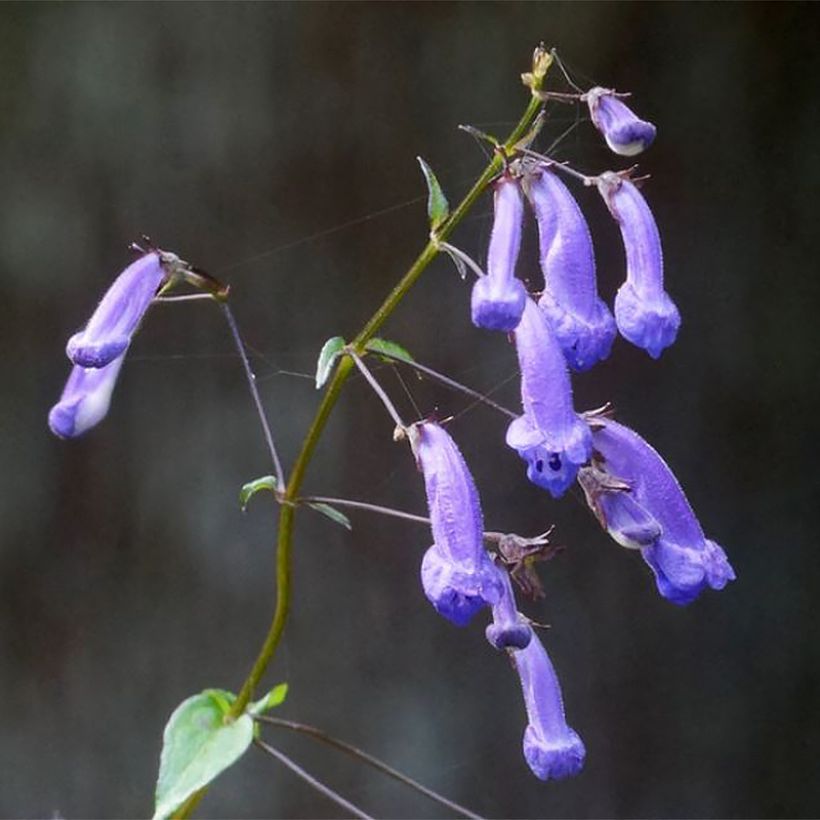

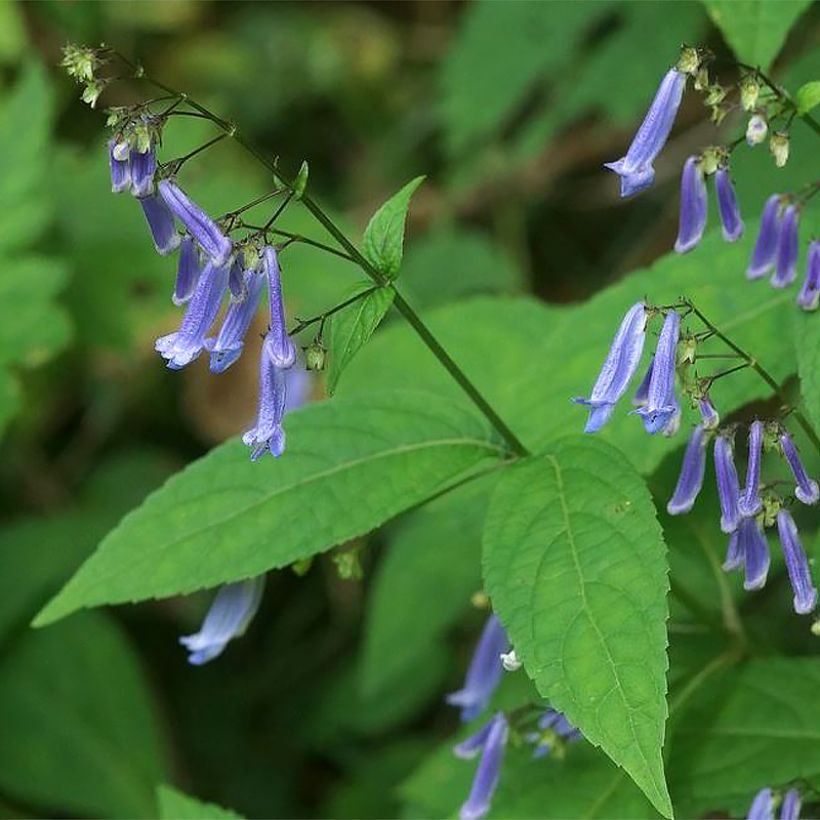

Flowering
Foliage
Plant habit
Botanical data
Isodon
effusus
Lamiaceae
East Asia
Other Perennials A to Z
Planting and care
Isodon effusus is hardy beyond -15°C (5°F). It appreciates rich and humus-rich, slightly acidic, neutral or even slightly calcareous soils, which remain moist during summer. Cold winds will burn its late flowers so plant it in a sheltered location (under the cover of trees or protected by a hedge, for example). This plant prefers partial shade, but tolerates dense shade and also grows in the (non-burning) sun if the soil remains consistently moist. Plant it in spring, so that it has time to acclimatise well. It seems to withstand moderate drought, but performs best in soil that retains some moisture. A layer of compost spread around the base of the plant will be beneficial. The stems can sometimes collapse: they can be left to naturally fall or be supported by a stake, or even leaned against neighbouring plants. The stems die late. We advise you to leave them in place during winter, and cut back the clump in spring before the start of vegetation. This way, you may be able to obtain seeds that will germinate a little further away. It can be multiplied by dividing the stump in spring or by rooting the base of the stems in September, or by sowing in spring under a cold frame.
Planting period
Intended location
Care
This item has not been reviewed yet - be the first to leave a review about it.
Shade-loving perennials
Haven't found what you were looking for?
Hardiness is the lowest winter temperature a plant can endure without suffering serious damage or even dying. However, hardiness is affected by location (a sheltered area, such as a patio), protection (winter cover) and soil type (hardiness is improved by well-drained soil).

Photo Sharing Terms & Conditions
In order to encourage gardeners to interact and share their experiences, Promesse de fleurs offers various media enabling content to be uploaded onto its Site - in particular via the ‘Photo sharing’ module.
The User agrees to refrain from:
- Posting any content that is illegal, prejudicial, insulting, racist, inciteful to hatred, revisionist, contrary to public decency, that infringes on privacy or on the privacy rights of third parties, in particular the publicity rights of persons and goods, intellectual property rights, or the right to privacy.
- Submitting content on behalf of a third party;
- Impersonate the identity of a third party and/or publish any personal information about a third party;
In general, the User undertakes to refrain from any unethical behaviour.
All Content (in particular text, comments, files, images, photos, videos, creative works, etc.), which may be subject to property or intellectual property rights, image or other private rights, shall remain the property of the User, subject to the limited rights granted by the terms of the licence granted by Promesse de fleurs as stated below. Users are at liberty to publish or not to publish such Content on the Site, notably via the ‘Photo Sharing’ facility, and accept that this Content shall be made public and freely accessible, notably on the Internet.
Users further acknowledge, undertake to have ,and guarantee that they hold all necessary rights and permissions to publish such material on the Site, in particular with regard to the legislation in force pertaining to any privacy, property, intellectual property, image, or contractual rights, or rights of any other nature. By publishing such Content on the Site, Users acknowledge accepting full liability as publishers of the Content within the meaning of the law, and grant Promesse de fleurs, free of charge, an inclusive, worldwide licence for the said Content for the entire duration of its publication, including all reproduction, representation, up/downloading, displaying, performing, transmission, and storage rights.
Users also grant permission for their name to be linked to the Content and accept that this link may not always be made available.
By engaging in posting material, Users consent to their Content becoming automatically accessible on the Internet, in particular on other sites and/or blogs and/or web pages of the Promesse de fleurs site, including in particular social pages and the Promesse de fleurs catalogue.
Users may secure the removal of entrusted content free of charge by issuing a simple request via our contact form.
The flowering period indicated on our website applies to countries and regions located in USDA zone 8 (France, the United Kingdom, Ireland, the Netherlands, etc.)
It will vary according to where you live:
- In zones 9 to 10 (Italy, Spain, Greece, etc.), flowering will occur about 2 to 4 weeks earlier.
- In zones 6 to 7 (Germany, Poland, Slovenia, and lower mountainous regions), flowering will be delayed by 2 to 3 weeks.
- In zone 5 (Central Europe, Scandinavia), blooming will be delayed by 3 to 5 weeks.
In temperate climates, pruning of spring-flowering shrubs (forsythia, spireas, etc.) should be done just after flowering.
Pruning of summer-flowering shrubs (Indian Lilac, Perovskia, etc.) can be done in winter or spring.
In cold regions as well as with frost-sensitive plants, avoid pruning too early when severe frosts may still occur.
The planting period indicated on our website applies to countries and regions located in USDA zone 8 (France, United Kingdom, Ireland, Netherlands).
It will vary according to where you live:
- In Mediterranean zones (Marseille, Madrid, Milan, etc.), autumn and winter are the best planting periods.
- In continental zones (Strasbourg, Munich, Vienna, etc.), delay planting by 2 to 3 weeks in spring and bring it forward by 2 to 4 weeks in autumn.
- In mountainous regions (the Alps, Pyrenees, Carpathians, etc.), it is best to plant in late spring (May-June) or late summer (August-September).
The harvesting period indicated on our website applies to countries and regions in USDA zone 8 (France, England, Ireland, the Netherlands).
In colder areas (Scandinavia, Poland, Austria...) fruit and vegetable harvests are likely to be delayed by 3-4 weeks.
In warmer areas (Italy, Spain, Greece, etc.), harvesting will probably take place earlier, depending on weather conditions.
The sowing periods indicated on our website apply to countries and regions within USDA Zone 8 (France, UK, Ireland, Netherlands).
In colder areas (Scandinavia, Poland, Austria...), delay any outdoor sowing by 3-4 weeks, or sow under glass.
In warmer climes (Italy, Spain, Greece, etc.), bring outdoor sowing forward by a few weeks.

































